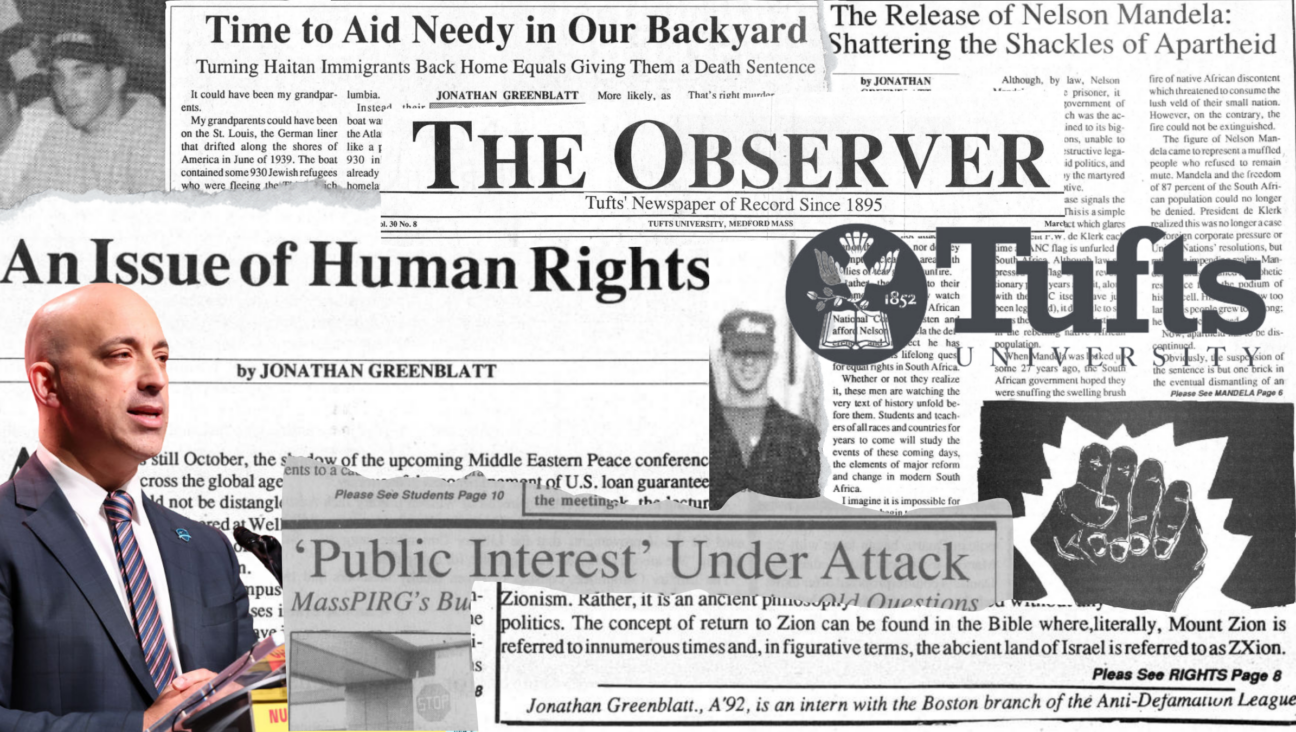Raising Cups, Dropping Oranges
At the first Seder my husband and I hosted in 1999, we eagerly incorporated two feminist rituals we had seen in the Ma’yan Passover Haggadah. We placed a Miriam’s Cup (a wedding gift from several years beforehand) on our Seder table and an orange on our Seder plate. Our mothers cheered.
In the following 10 years, we gained two children, lost two parents and wrote our own Haggadah. Looking back, I realize that one of these rituals, Miriam’s Cup, endured, whereas we no longer use the orange. Several other friends, educated Jewish feminists, had the same experience.
Miriam’s Cup is now mainstream. It appears in Haggadot endorsed by the Reform and Reconstructionist movements, it is recommended by the Women’s League for Conservative Judaism and it is embraced by Orthodox feminists. It is sold at many Judaica stores. In contrast, none of my daughter’s day school teachers had heard of the orange. They all knew of Miriam’s Cup, and the kids even made them in kindergarten. I began to wonder why one new feminist ritual would persist so powerfully and spread so quickly, while the other faded.
The ritual of placing an orange on the Seder plate is actually two distinct rituals — one intended by its creators and the more widespread practice that was transformed through the folk process.
The scholar Susannah Heschel has described how, in the early 1980s, she heard that students at Oberlin College had suggested a crust of bread be placed on the Seder plate to symbolize that lesbians had been as excluded from Judaism like bread was from a Seder plate. Not wanting people to think that lesbians were as forbidden as hametz on Passover, she replaced the bread with an orange. The orange, she has said, symbolized the fruitfulness of fully inclusive Judaism.
Somehow, through the broke telephone of the folk process (and probably partly as a result of homophobia), the story that spread was very different. In it, a man is said to have told Heschel, “Women belong on the bimah” — or as rabbis, or reading Torah, depending on the variation — “as much as an orange belongs on the Seder plate.” In response, the story goes, she placed an orange on her Seder plate. The latter version is what we heard in the 1990s that prompted us to adopt the ritual.
The ritual of Miriam’s Cup at the Seder emerged slightly later. As described in the Ma’yan Haggadah, in 1989 women in a Rosh Hodesh group were looking at traditional texts to create new rituals. They discussed the midrash of Miriam’s Well. Miriam’s Well was first described by Rashi in the 11th century to explain the juxtaposition of Miriam’s death and the shortage of water, expanding upon a brief mention of the well in the Talmud. Miriam’s Well appeared in the desert whenever the Israelites lacked water, saving them.
Stephanie Loo Ritari took this powerful image a step further. Inspired by her Kiddush cup, she created a Miriam’s Cup filled with spring water to commemorate the well’s life-giving waters. The group of women quickly latched on to the ritual, using it at Shabbat, Rosh Hodesh and in particular at the Passover Seder, where it quickly spread.
Reflecting on our experiences with these rituals over the years, there are several reasons why we embraced Miriam’s Cup and dropped our use of the orange. The most obvious reason is the deep textual connection Miriam, Moses’ sister, has to the Passover story.
Though Miriam is not in the traditional Haggadah (which actually only mentions Moses once), she has several parts in the biblical Exodus story. She watches Moses in the basket, arranges for their mother to be his wet nurse, and famously leads the women in song and dance in celebration of the Exodus. The orange, by design, has no connection to the Passover story (except through the theme of oppression). Emphasizing Miriam inspired my family to add all these biblical texts to our Haggadah, as well as those about other females heroes, like the midwives who refused to kill the Israelite boys.
While the orange highlights the pain of exclusion, it is not successful in transforming this righteous indignation into empowerment and inclusion. Nor does it acknowledge the great strides that have been made in these areas.
My daughter is lucky enough to grow up in a feminist and gay-positive shul and day school. The idea that gays and lesbians don’t belong in Judaism or that women don’t belong on the bimah sounds ridiculous to her and doesn’t resonate with her personal experience. Thanks to those who struggled for equality before her, she doesn’t viscerally feel the pain of exclusion that the orange symbolizes. But she will be emboldened by growing up with Miriam as a canonized Passover hero.
Aurora Mendelsohn is a biostatistician who lives in Toronto.

I hope you appreciated this article. Before you go, I’d like to ask you to please support the Forward’s award-winning journalism this Passover.
In this age of misinformation, our work is needed like never before. We report on the news that matters most to American Jews, driven by truth, not ideology.
At a time when newsrooms are closing or cutting back, the Forward has removed its paywall. That means for the first time in our 126-year history, Forward journalism is free to everyone, everywhere. With an ongoing war, rising antisemitism, and a flood of disinformation that may affect the upcoming election, we believe that free and open access to Jewish journalism is imperative.
Readers like you make it all possible. Right now, we’re in the middle of our Passover Pledge Drive and we still need 300 people to step up and make a gift to sustain our trustworthy, independent journalism.
Make a gift of any size and become a Forward member today. You’ll support our mission to tell the American Jewish story fully and fairly.
— Rachel Fishman Feddersen, Publisher and CEO
Join our mission to tell the Jewish story fully and fairly.
Only 300 more gifts needed by April 30






















